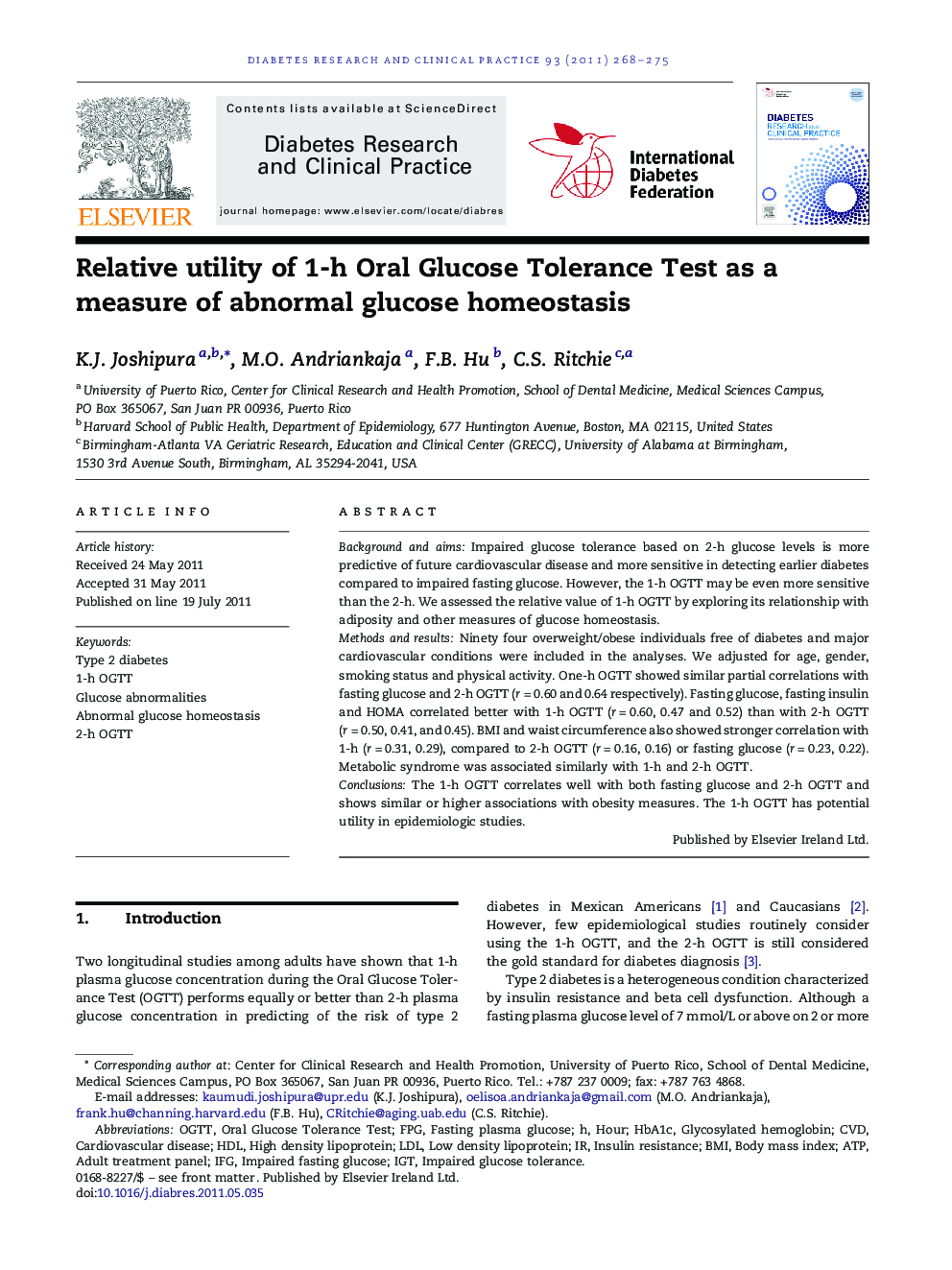| کد مقاله | کد نشریه | سال انتشار | مقاله انگلیسی | نسخه تمام متن |
|---|---|---|---|---|
| 2797153 | 1155636 | 2011 | 8 صفحه PDF | دانلود رایگان |

Background and aimsImpaired glucose tolerance based on 2-h glucose levels is more predictive of future cardiovascular disease and more sensitive in detecting earlier diabetes compared to impaired fasting glucose. However, the 1-h OGTT may be even more sensitive than the 2-h. We assessed the relative value of 1-h OGTT by exploring its relationship with adiposity and other measures of glucose homeostasis.Methods and resultsNinety four overweight/obese individuals free of diabetes and major cardiovascular conditions were included in the analyses. We adjusted for age, gender, smoking status and physical activity. One-h OGTT showed similar partial correlations with fasting glucose and 2-h OGTT (r = 0.60 and 0.64 respectively). Fasting glucose, fasting insulin and HOMA correlated better with 1-h OGTT (r = 0.60, 0.47 and 0.52) than with 2-h OGTT (r = 0.50, 0.41, and 0.45). BMI and waist circumference also showed stronger correlation with 1-h (r = 0.31, 0.29), compared to 2-h OGTT (r = 0.16, 0.16) or fasting glucose (r = 0.23, 0.22). Metabolic syndrome was associated similarly with 1-h and 2-h OGTT.ConclusionsThe 1-h OGTT correlates well with both fasting glucose and 2-h OGTT and shows similar or higher associations with obesity measures. The 1-h OGTT has potential utility in epidemiologic studies.
Journal: Diabetes Research and Clinical Practice - Volume 93, Issue 2, August 2011, Pages 268–275